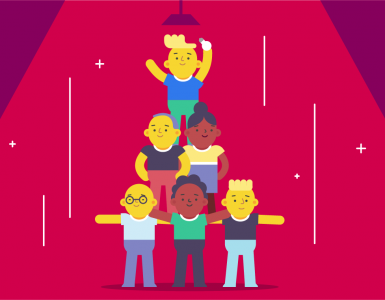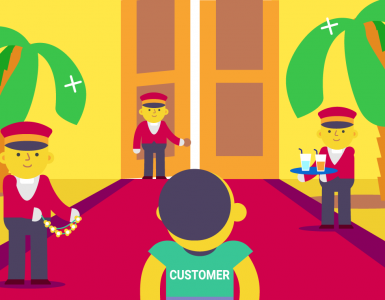The job market has never been more intense. Job postings are fewer, competition is fiercer, and AI is starting to take over the game. For applicants, the drill continues: apply, wait, interview… then do it again — over and over. For recruiters and HR professionals, it’s just the opposite, a pile of resumes, gut feelings, and constant anxiety of missing out on top talent.
As the pressure mounts, interviews stretch out for multiple rounds. Each one promises the hope of clarity but too often delivers only more indecision. Somewhere amidst all those resumes, gut feelings, and polite follow-ups, assessment tools begin to appear. They are presented as a way to bring order to the chaos.
They hold out the promise of saving time, reducing bias, and gaining insight — a godsend on paper. It looks good, like a line in a well-crafted resume. To many, though, they are just another hurdle in an already exhausting process.
So the question is: are assessment tools the hiring world’s best-kept secret, or just another round in the modern job-seeking Hunger Games?
In this guide, we’ll unpack what these tools actually do, why they’re gaining traction, and what both sides of the hiring table need to know to navigate them wisely.
What are assessment tools?
Assessment tools aren’t just checkboxes within an interview session. They are designed to elicit more deeper understanding of the potential of a candidate — information you can’t always read through a resume, or learn about in an interview. They’re like a shortcut to whether or not a candidate is the right person for the job, the company, and even the team dynamic.
Essentially, they are structured methods or tests to measure various traits, skills, and abilities. Anything from intellectual abilities, technical aptitude, to culture and personality fit can be measured. Whether it is a basic skills test or a full personality test, assessment tools help provide employers with fact-based data to make better hiring decisions.
Common types of assessment tools include:
- Skills assessments: Tests that determine specific competencies, like coding or problem-solving.
- Cognitive tests: They assess reasoning and critical thinking.
- Personality tests: An insight into whether the candidate will fit into the company culture or handle team dynamics.
- Behavioral assessments: They assess how the candidates would react in provided work scenarios.
By leveraging recruitment assessment tools, employers move beyond gut feelings and guesswork — because, let’s face it, even the most polished interviewees can turn out to be poor hires.
Why assessment tools matter more today
So, why are companies increasingly relying on these tools?
One key reason is the rising complexity of modern roles. Many jobs now require a hybrid mix of technical know-how, adaptability, and interpersonal strengths. Traditional interviews often fail to uncover how candidates perform under pressure, collaborate cross-functionally, or navigate change. Assessment tools for recruitment and selection allow employers to explore these deeper layers of potential earlier in the hiring process.
On top of that, organizations are under pressure to make faster, smarter hiring decisions. With limited resources and high turnover costs, the need to identify high performers early — and accurately — has never been greater. This is where recruiting assessment tools come in. They serve as reliable filters, highlighting candidates who show the competencies needed for long-term success.
Moreover, as more companies shift toward building agile, future-ready teams, they’re moving from “what has this person done?” to “what could they do?” — and employee potential assessment tools are designed to support exactly that shift. Even if someone doesn’t check every traditional resume box, these tools can highlight candidates with standout growth potential, problem-solving ability, or leadership capacity.
In short, assessment tools aren’t just about validating current skills — they’re about forecasting future value.
What recruiters and HR should know about assessment tools
For recruiters and HR departments, assessment tools are now a “nice to have” and are now a requirement. With tighter timelines, fewer resources, and the mounting pressure to get it right the first time, these tools are becoming increasingly indispensable in recruitment and selection.
These tools allow you to look beyond resumes and cover letters, which will more often expose writing skills rather than actual work competence. Using the proper recruitment assessment instruments, you can evaluate a candidate’s problem-solving ability, emotional quotient, or technical proficiency prior to investing a few rounds of interviews.
But not all tests are created equal. Some provide you with an in-depth behavioral analysis, while others provide you with snap tests. The secret is to choose tools that align with your hiring goals. Are you looking for a culture fit? A high achiever in high-pressure situations? A creative problem solver? Your test tool needs to reflect that emphasis.
Validity, predictive power, and bias
To ensure you’re using the right tool, it’s importantto consider three things:
- Validity: Does the tool measure what it claims to — be it cognitive ability, personality, or technical skill?
- Predictive power: Can it reliably forecast job performance or cultural fit?
- Bias reduction: A well-designed, data-driven test can help minimize unconscious bias and uncover talent that might otherwise be overlooked.
Ease of integration and legal compliance
Ease of integration is also a factor to consider. Will the tool be easily integrated into your existing ATS or HR procedures? It should also be labor law-compliant, such as EEOC laws in the U.S., so that it does not expose your organization to legal trouble. Customization options are also essential — can the tool be tailored to accommodate the needs of different roles or departments?
Candidate experience and usability
Don’t overlook the candidate experience. A poorly designed or overly long test can lead to drop-offs and reflect poorly on your brand. When used transparently and respectfully, recruiting assessment tools can enhance your process. Candidates value fairness and clarity — even those who don’t get the job.
The tool should be easy to navigate, both for your team and the applicant. An intuitive, user-friendly interface ensures a smooth experience and keeps your recruitment process moving efficiently.
Efficiency and reporting
Efficiency is essential in today’s high-speed hiring environment. How quickly can the tool administer and provide results? Screening capability is another factor to consider — how well can it rule out unqualified candidates earlier in the process? Tools that allow you to rapidly narrow down the applicant pool can save you time and money. Also, ensure that the tool is properly reporting and providing you with insights. Does it give you dashboards or data that guide your decisions and enable you to track your recruitment metrics?
Cost-effectiveness and reputation
Cost-effectiveness always comes into consideration. How is the cost of the tool related to the value it provides? A quality tool needs to be cost-effective yet yield high ROI in quality recruits and saved time. Don’t forget reputation and credibility — picking a quality tool from a reputable brand assures you’re dealing with an efficient, tried-and-tested solution.
Be mindful of candidate drop-off rates
Finally, be mindful of candidate drop-off rates. Does the tool frustrate applicants to the point that they abandon the process? A tool that’s too long, complicated, or technical can cause qualified candidates to drop out, reducing your talent pool. It’s essential to strike a balance between thorough assessments and a smooth candidate experience.
Bottom Line? Employee potential assessment tools used prudently are a win-win. They conserve time, impose structure, and increase hiring predictability. Not magic, perhaps, but they certainly offer a smarter, streamlined path to decisions.
But how do these tools affect the candidate experience?
Why job seekers should care about assessment?
For job seekers, assessment tools can feel like just another obstacle before landing a call back. However, with a better understanding of how they work and how to approach them, these tools can actually work in your favor.
These tools are often designed to give hiring managers a clearer, more objective picture of your strengths. Whether you’re being tested on your skills, your personality fit, or your cognitive abilities, these tests provide data that can set you apart — especially if your resume is not littered with big names or years of experience. If you’re a great communicator, a fast learner, or a born leader, the right tool can reveal those strengths before anyone ever lays eyes on you.
Purpose and fairness
The purpose of these tools is to reveal what’s beyond the resume — your true potential. They focus on your problem-solving skills, thought process, and cultural fit, not just checkboxes. While they may seem like another hurdle, they are designed to be more objective than traditional hiring methods.
Preparation and transparency
The good news is that preparation doesn’t mean cramming for an exam. Instead, it’s about smart, strategic preparation. Familiarize yourself with the common types of assessments in your industry — from logic games to time management simulations or personality tests. There are plenty of practice locations and online programs that will leave you comfortable with the format, reducing anxiety on test day and boosting results. The more familiar you are with the tools, the better equipped you are to have them work for you.
Some programs even offer you sample tests so that you become accustomed to the process. Knowing what to expect will turn a stressful experience into an opportunity to play to your strengths. Also, there are websites that give you feedback so you can understand how you’re viewed, if you pass or not. Transparency is not the norm, but it’s a helpful look at how hiring groups might perceive you professionally, providing you with insight that you wouldn’t get from an interview alone.
Impact on hiring and time investment
Regarding how much weight these tests hold in the application process, that also depends on the company and job. Sure, they do count, but they typically supplement — but don’t supplant — experience and interviews. They’re intended to give a fuller picture of what you can do beyond interview performance. Depending on the position and the way the company fills jobs, however, test tools may have more or less influence on the final decision.
Time-wise, the majority of tests are taken once, but a few can go through several stages. Some might be taken very speedily, while others might take hours or be a process that takes a few steps. Regardless, knowing what you’re in for in terms of time and effort can enable you to prepare yourself appropriately.
Feedback and self-reflection
Don’t overlook the personal insights these tools offer. Some assessment platforms provide detailed reports, giving you a valuable look at how you are perceived professionally — a sneak peek that can empower you to make improvements. Having an idea of where you excel and where you might need to improve can also shape your career development and practice for interviews.
Bottom line? These tools aren’t gatekeepers. Managed correctly, they can be your highlight. So, instead of thinking of them as barriers, think of them as an opportunity to shine and to display your genuine skills.
Assessment Tools for Recruitment and Selection
Choosing the right assessment tools for recruitment and selection can make the difference between a confident hire and a costly mistake. But with so many options available, it’s crucial to understand what each tool does — and where in the hiring process it adds the most value.
Some tools are best for screening, others for deeper insights later in the process. And not every tool fits every role. The smartest strategy is using targeted tools that align with what you’re really hiring for — whether it’s technical skill, emotional intelligence, or leadership readiness.
Here’s a quick guide to some of the best-known recruiting assessment tools, what they measure, and how they’re typically used:
| Tool | What It Measures | When to Use | Use Case |
| Codility | Programming skills, technical problem-solving | Early screening for developer roles | Tech hiring, coding challenges |
| Vervoe | Job-specific skills (customizable) | Early to mid-stage | Customer service, marketing, sales |
| Wonderlic | Cognitive ability, logic, math, verbal skills | Early or mid-stage | General aptitude screening across industries |
| CCAT (Criteria Cognitive) | Critical thinking, problem-solving | Early to mid-stage | Fast-paced roles, analytical jobs |
| The Predictive Index (PI) | Behavioral drives, work style | Mid to final stages | Team fit, culture alignment |
| Hogan Assessments | Personality traits, leadership risk factors | Mid to final stages, especially for leadership | Executive roles, succession planning |
| SHL Situational Judgement | Decision-making, judgment in work scenarios | Mid-stage | Retail, management, customer-facing roles |
| CliftonStrengths (Gallup) | Strengths, motivators, performance style | Final stage or development planning | Team development, people-first hiring |
| DiSC Profile | Communication and collaboration preferences | Team roles, training initiatives | Culture fit, internal collaboration roles |
These employee potential assessment tools give hiring teams more reliable data to support their instincts — and give job seekers a chance to show who they really are beyond a resume.
Just remember: tools don’t replace conversations, they enhance them. The best hiring decisions still come from real human connection, not just scores on a screen.
Best practices for everyone involved in assessment process
Assessment tools can be powerful, but only when used right. Whether you’re hiring or applying, how you approach these tools matters just as much as the results themselves.
For recruiters and hr teams
1. Be transparent:
Always explain to candidates why an assessment is being used, what it measures, and how it fits into the hiring process. This builds trust and reduces anxiety — which, in turn, leads to better performance and more useful results.
2. Choose tools strategically:
Not every role needs the same kind of test. Use technical assessments for technical roles, situational tests for decision-making positions, and personality tools when culture fit is crucial.
3. Don’t rely solely on scores:
Assessments should inform your decision, not make it for you. Pair results with interviews, reference checks, and real conversations. Context matters.
4. Keep it fair:
Avoid bias by selecting validated tools and standardizing how they’re administered. Make sure tests are accessible and don’t disadvantage any group.
5. Use results beyond hiring:
Assessment data can help guide onboarding, team building, and development planning. It’s not just about who gets hired — it’s also about helping them thrive once they’re in.
For job seekers
1. Know what you’re being tested on:
Before taking any assessment, ask what it’s for and what kind of questions to expect. If it’s a skills test — brush up. If it’s personality-based — answer honestly (there are no “right” answers).
2. Practice — but don’t overdo it:
For aptitude tests or timed challenges, practicing can help ease pressure. There are free resources and sample questions online — use them to get comfortable.
3. Be yourself, not who you think they want:
Trying to “game” personality or behavioral assessments usually backfires. Authenticity will match you with roles and teams where you’ll actually succeed — not just survive.
4. Don’t panic over scores:
Assessments are just one piece of the puzzle. If you feel you didn’t do well, don’t be afraid to ask for feedback or another opportunity to show your strengths.
5. Use it as a learning moment:
You might even discover new things about your skills, preferences, or work style through the process. Every assessment is a two-way mirror — you learn as much as they do.
Final Thoughts
Assessment tools aren’t magic — but they are meaningful. In a hiring landscape that’s more competitive and more automated than ever, they offer a structured way to bring clarity to complexity. For recruiters and HR, they sharpen instincts with data. For job seekers, they provide an opportunity to show real potential beyond the resume.
But like any tool, their value lies in how they’re used. Thoughtfully. Transparently. And with a mindset that sees people, not just scores.
Whether you’re hiring the next great teammate or hoping to be that person — understanding these tools puts you one step closer to a better, fairer, and more human decision.








